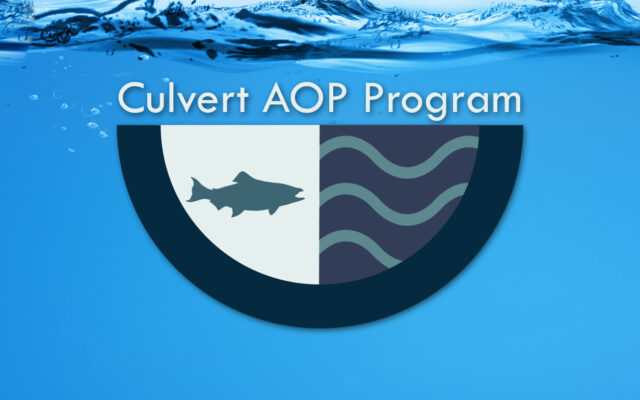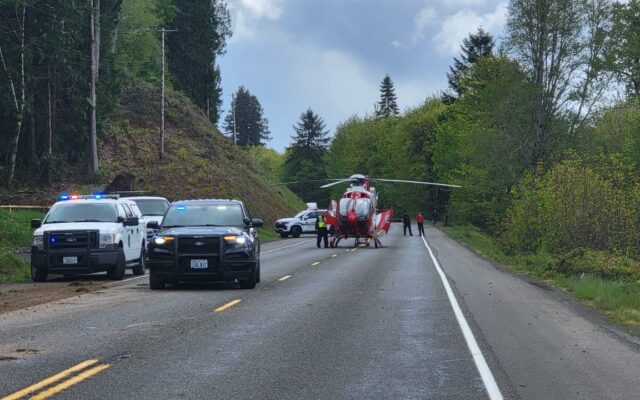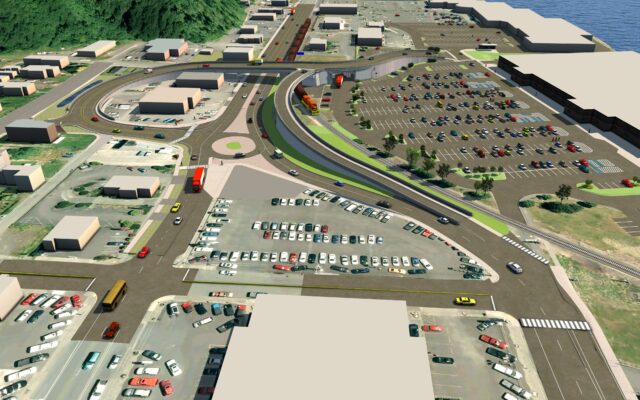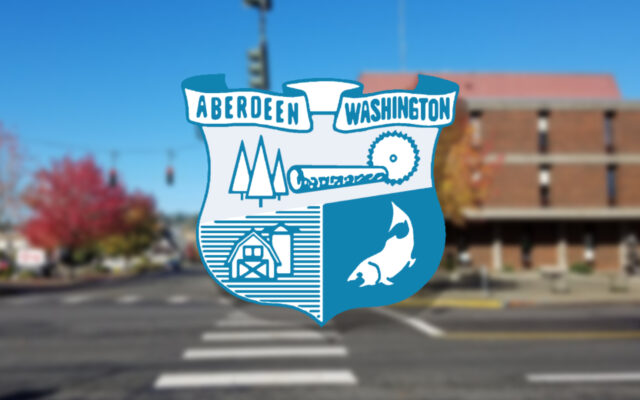5 Grays Harbor projects included among $58 Million for 23 Salmon Restoration Projects in WA

U.S. Senator Maria Cantwell (D-WA), chair of the Senate Committee on Commerce, Science, and Transportation announced a total of $58 million in funding for 23 projects for the removal of fish passage barriers like small dams and culverts, to open up salmon migration routes, and allow more salmon to return to their spawning grounds.
This includes just under $4.6 million for 5 projects in Grays Harbor specifically.
Funding will pay to remove culverts that block salmon from habitat in Grays Harbor, Chelan, Clallam, King, Kitsap, Lewis, Pierce, Skamania, Thurston, and Whatcom counties
The funding comes from the Department of Transportation’s (DOT) National Culvert Removal, Replacement, and Restoration Grant Program, which Sen. Cantwell created and passed through her Commerce Committee with overwhelming bipartisan support.
“Washingtonians are going to see more salmon coming back to rivers all across the Evergreen state. The 23 projects funded by this historic first round of National Culvert Grant awards will restore miles of salmon and steelhead habitat, helping revitalize communities that depend on these iconic fish for their livelihoods, recreation, and Treaty rights,” said Sen. Cantwell. “Projects range from opening up streams below aging rail infrastructure along Puget Sound, to building new bridges in Skamania County and on Bainbridge Island, to creating new estuary habitats in Bellingham and Port Orchard. Combined, these investments will help revitalize critical watersheds that Chinook, coho, chum, and steelhead rely on, and boost the ecosystems and orcas that depend on robust salmon returns.”
The National Culvert Removal, Replacement, and Restoration Grant Program builds on the additional $2 billion to support fish passage included in the Bipartisan Infrastructure Law and will specifically help communities remove and repair culverts found under roads.
“Historically, culverts were not constructed in a manner to ensure fish passage. These historic structures are especially problematic for coastal and Tribal communities who depend on thriving fish populations for their Treaty Rights, as well as for the regional economy and way of life in the Pacific Northwest.”
All 23 projects awarded in Washington state were fully funded.
Of the 23 total awards, 16 went to local projects, six to Tribal projects, and one was awarded to the Washington state Department of Transportation.
In total, the projects will improve a total of 46 fish passage barriers across the state.
Nationally, DOT awarded $195 million through this first round of grant program funding.
Washington state received over a quarter of the nationally awarded funding, the most of any state.
More projects will have the opportunity to receive DOT National Culvert Removal Grant awards in future funding rounds.
State awards:
Washington State Department of Transportation – SR166 Johnson Creek Fish Barrier Culverts Removal and Estuary Restoration – $4.1 million
- This project will remove the existing series of connected fish-barrier culverts on Johnson Creek to open up approximately 2,928 meters of potential upstream habitat for anadromous fish. The portion of the culvert within the WSDOT right-of-way will be replaced with a new single span bridge to maintain public transportation access into the City of Port Orchard on State Route 166. The sections of culvert immediately upstream of the highway and existing buildings, which are within City jurisdiction, will be entirely removed to eliminate the remainder of the 500-footlong fish barrier, address recurring flooding problems, and restore the historic pocket estuary in their place.
Local Awards:
Bainbridge Island – Springbrook Creek Fish Passage Restoration, Culvert and Weir Removal – $2.568 million
- The City of Bainbridge Island will remove a 60-inch failing culvert (only 33% passable to fish) and weir (100% fish passage barrier) and replace it with a 60-foot bridge. The goal of the project is to restore fish passage and population capacity within the project reach and upstream, improve in-stream and riparian habitat conditions, and improve the capacity of the stream to accommodate hydrologic changes associated with climate change. Springbrook Creek is designated as critical habitat for ESA listed threatened Puget Sound steelhead. The project was identified as the number 1 priority restoration project in its watershed as part of a 2018 assessment.
City of Bellingham – Squalicum Creek Estuary Restoration – $1.840 million
- This is part of a larger project to replace two multi-cell culvert crossings at the mouth of Squalicum Creek in Bellingham, Washington, as well as to conduct estuary restoration at the mouth of the river. The barriers include a railroad spur structure carrying a BNSF railroad facility comprised of six concrete box culverts and a structure on Roeder Avenue that is a three-cell concrete culvert. The overarching project will address barriers to the largest independent coastal stream in the Nooksack River Basin, benefit threatened anadromous fish stocks important to regional salmon recovery efforts, and help reduce flooding in the community. This funding will be used to advance this design from concept-level to a 60% stage, including significant investigative work, consensus-building and community outreach, and engineering design.
Chelan County – Eagle Creek fish passage restoration project – $744,804
- The Eagle Creek Fish Passage Restoration Project will replace 5 culverts in lower Eagle Creek between River Mile (RM) 0.4 and RM 0.6 and open up 750 meters (0.5 RMs) of ESA-listed species habitat to the next upstream barrier located at RM 0.9. The application is part of a watershed scale coordinated effort spanning 27 years to restore accessibility to 20 miles of ESA-listed steelhead and spring Chinook habitat as well as coho habitat in the Chumstick Sub-Watershed. All five culvert crossings are located on private driveways with distances ranging from 54 meters to 9 meters from Eagle Creek Road.
Grays Harbor County – County Polson Creek Fish Passage – $307,142
- The purpose of the Polson Creek Fish Passage Design Project is to fund design and the removal of a fish passage barrier culvert, replacing it with a structure that is fully passable to all aquatic species in Polson Creek. This barrier correction will meaningfully restore fish passage for 5 species of anadromous fish by opening access to 5.64 miles of excellent spawning and rearing habitat in forested properties upstream.
Grays Harbor County – Mopang Creek at Walker Road Fish Passage Project – $931,840
- This project will remove a fish passage barrier culvert installed under Walker Road at its crossing over Mopang Creek and replace it with a fully passable structure, benefitting six anadromous fish species including four salmon and two trout species.
Grays Harbor County – Berryman Creek at East Hoquiam Road Fish Passage Design Project – $307,142
- This project will involve replacement of a fish passage barrier culvert under a county road crossing on Berryman Creek by designing and permitting the culvert’s removal and proceeding to final design of its replacement with a fully fish passable stream crossing structure.
Grays Harbor County – Workman Creek at Lambert Road Fish Passage $2.3 million
- The purpose of the Workman Creek at Lambert Road Fish Passage Project is to design, permit, and implement the removal of two fish passage barrier culverts installed under a single road crossing and their replacement with a structure that is fully passable to all aquatic species in Workman Creek. The existing fish passage barrier is under Lambert Road south of Elma, Washington, in Grays Harbor County. This barrier correction will meaningfully restore fish passage for six species of anadromous fish by opening access to 20.73 miles of excellent spawning and rearing habitat in forestland upstream.
Grays Harbor County – Chenois Creek at Chenois Valley Road Fish Passage – $753,762
- This project will remove two steel culverts under a single road crossing of Chenois Creek and replace them with a fully passable structure, benefitting five anadromous fish species including three salmon and two trout species. The proposal will also reconnect the creek with its floodplain.
King County – Bear Creek Basin Fish Passage Project – $6.849 million
- This project bundles three culvert sites within the Bear Creek Basin of Unincorporated King County that are high priorities for fish passage restoration. This application will replace three salmon blocking culverts with culverts at two sites and a bridge at a third. One site “is overtopped by up to one foot of water during relatively minor precipitation events.” Project includes improved stormwater treatment and revegetation and some road safety (geometry) improvements.
Lewis County Public Works – 2022 Culvert Aquatic Organism Passage Program for Allen Creek at Newaukum Valley Rd Fish Passage – $211,000
- This project will provide a final design to remove an existing fish passage barrier at river mile 0.56 of Allen Creek on Newaukum Valley Rd at MP 2.366 and replace it with a fish passable structure. The existing structure consists of two side by side cast in place box culverts approximately 10-foot wide and 7-foot tall, which carry flows from Allen Creek. The structure is 0 percent passable due to a velocity barrier. This proposed fish passable structure, once constructed, is anticipated to restore immediate access to 2.43 miles of habitat for the Southwest Washington Evolutionarily Significant Unit of coho salmon and 1.67 miles of habitat for the Southwest Washington Distinct Population Segment of winter steelhead trout.
Pierce County – Harts Lake Road South at Horn Creek Restoration Project – $7.6 million
- The Harts Lake Road-Horn Creek Restoration Project will replace the culvert that conveys Horn Creek beneath Harts Lake Road South in Pierce County, approximately 4.2 miles southeast of McKenna. Replacing this culvert removes a partial barrier to fish migration due to high velocity stream flows. The project will open access for Chinook, steelhead, chum, coho, and coastal Cutthroat to more than 4 miles of Horn Creek and tributaries upstream of the Horn Creek culvert.
Pierce County – Brighton Creek at Harts Lake Road South Culvert Replacement – $2 million
- This project will replace the culvert that conveys Brighton Creek beneath Harts Lake Road South in Pierce County, with a minimum 40-foot span three-sided concrete culvert (bridge) 1 mile east of the unincorporated community of McKenna. Replacing this culvert will remove the lowest downstream fish barrier in Brighton Creek and will open more than 6 miles of upstream habitat, including half a mile of high-quality spawning and rearing habitat for ESA listed steelhead and coho salmon.
Port of Tacoma – Wapato Creek Fish Passage Restoration – $2 million
- This project will support design and permitting for a solution to a failing culvert that limits aquatic connectivity and threatens operations of a busy international container terminal. Fish passage through the Wapato Creek Culvert is possible only during high tides, which restricts anadromous salmonids’ access to upstream habitat.
Thurston County – Green Cove Creek Fish Barrier Removal, Phase I – $3 million
- This project will fund the replacement of the most downstream fish blocking culvert in the Green Cove Creek (GCC) Watershed. In addition, funding will complete preliminary design for two upstream barriers. These three locations are the key barriers to restore fish access in the GCC watershed. The project will replace the culvert with a bridge.
Town of Steilacoom – Garrison Springs Creek/Chambers Creek Road Culvert Replacement – $500,000
- This project will support design, permitting, engineering, and related studies for the replacement of a culvert under Chambers Creek Road that connects Garrison Springs Creek to Chambers Bay – one of the largest estuary embayments along Puget Sound. Replacing the culvert is a key component to the restoration of the Creek. Once restored and the culvert replaced, Garrison Springs Creek will provide over 1,100 feet of important spawning and rearing habitat for salmonids and other native fish species.
Whatcom County – Fish Passage Restoration Portfolio Development – $880,031
- This project will fund scoping (survey and base map creation; site geotechnical, hydrology, and hydraulics assessment; obtaining agency concurrence; preparation of 30% designs; and construction cost estimates) on 11 salmon-blocking culvert sites across Whatcom County.
Tribal Awards:
Cowlitz Indian Tribe – Hardy Creek Fish Passage Project – $5.012 million
- This project will remove a documented fish passage barrier located on Hardy Creek, a tributary of the Columbia River in Skamania County. This application will address the removal of a barrier at the BNSF Railway -Hardy Creek crossing and the installation of a new bridge span. The proposed removal of the culvert barrier beneath the BNSF railroad will restore full anadromous fish access to 296 meters (of spawning and rearing habitat between the BNSF railroad and a documented upstream partial barrier at State Route 14.
Sen. Cantwell wrote a letter to DOT Secretary Buttigieg in support of this award earlier this year.
Cowlitz Indian Tribe – Indian Mary Springs Fish Passage Project – $2.550 million
- This Cowlitz Indian Tribe project will replace two undersized 3-foot corrugated culverts on the Indian Mary Springs, a tributary to the Columbia River in the Columbia River Gorge in Skamania County, Washington. The Tribe, in partnership with BNSF, proposes to remove the Indian Mary Springs culverts and associated ballast/fill material at a BNSF Railway crossing, and install a new 90-foot steel bridge crossing. Project benefits include restoring fish access to 2,200 feet of productive wall-based seeps and ground-water resources, restores natural processes, increases juvenile salmonid access to thermal refugia habitat, increase climate resilience, and benefits ESA populations of in-basin and out-of-basin salmon and steelhead species.
Sen. Cantwell wrote a letter to DOT Secretary Buttigieg in support of this award earlier this year.
Nooksack Indian Tribe – Jones Creek Fish Passage BNSF Railway Culvert Replacement -$1.238 million
- This project will fund the removal of a barrier box culvert in Jones Creek under a BNSF Railway line that is less than 20 meters from the South Fork Nooksack River confluence. The Washington Department of Fish and Wildlife classified the site as only 33% passable in 2003. The project will replace the culvert with a bridge.
Port Gamble S’Kallam Tribe – Middle Creek Culvert Replacement Project – $754,000
- This project aims to design the removal and restoration of a 100% fish passage barrier culvert located on Middle Creek. The Middle Creek fish passage barrier (identified as Site ID: 15.0352 in WDFW Inventory) is a high priority project for The Port Gamble S’Klallam Tribe because this stream has been the spawning and rearing ground for coho, steelhead, searun cutthroat, and resident trout.
Jamestown S’Kallam Tribe – Chicken Coop Creek Culvert Restoration Project – $4.2 million
- This project will complete final design, permitting, and construction for replacement of two complete fish passage barriers on Chicken Coop Creek, in Clallam County. The County owns and maintains the two culverts on Chicken Coop Creek, which cross Tribally owned lands upstream, and downstream the culvert crossing is adjacent to Trust property. This project will improve passage for five anadromous species, one of which is an ESA listed species. Chicken Coop Creek is identified as adult spawning and juvenile rearing habitat.
Puyallup Tribe of Indians – Clear Creek Watershed Fish Passage BNSF Railway Culvert Replacements – $7.4 million
- The Puyallup Tribe project will remove four salmon blocking culverts, and improve instream habitat for anadromous fish on tributaries of the Puyallup River. The four barriers are located on Clear Creek, a major stream basin on the lower Puyallup River, or tributaries of that stream, all associated with existing culverts under the BNSF Railway. Tributary barriers are located on Swan, Squally, and Canyon creeks. ESA-listed fall Chinook salmon have been documented in Clear Creek and ESA-listed steelhead trout have been documented in all four tributaries. Coho and chum salmon also utilize this watershed, as well as resident trout species. In addition, ESA-listed bull trout have been documented in lower Clear Creek.



